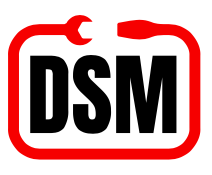
DSM Online Support
Support Master
Welcome to DSM Online
How can I help you today
How can we assist you? please let us know the support you need from DSM Online

Every great robotics project, from a simple line-follower to a complex robotic arm, starts with the right foundation. For many makers, that foundation is a simple, reliable, and powerful motor. In the world of hobbyist electronics, few motors are as ubiquitous and dependable as the BO Motor, and for good reason. Specifically, the BO Motor Dual Shaft 100 RPM model is an absolute workhorse, offering a perfect blend of speed, torque, and versatility that makes it an indispensable component for a vast range of projects. If you're building a robot car, a motorized display, or any other device that needs controlled motion, this motor is likely to be your best friend.
The term "BO" simply stands for "Battery Operated," a nod to the fact that these motors are designed to run efficiently on low DC voltages, typically ranging from 3V to 12V. They are a type of geared DC motor, which is crucial for understanding their value. A geared motor uses an internal gearbox to reduce the output speed (RPM) of the motor while significantly increasing its torque. This is a fundamental trade-off in robotics: higher speed often means lower torque, and vice versa.
The BO motor dual shaft 100 RPM model strikes an excellent balance. With a speed of 100 RPM (Revolutions Per Minute), it’s slow enough for precise control but fast enough for mobility in most hobbyist applications. The plastic gearbox makes it lightweight and affordable, making it a cost-effective alternative to more expensive metal gear motors.
While a standard BO motor has a single shaft, the BO Motor Dual Shaft variant adds a layer of convenience and functionality. It has an output shaft on both the front and the back of the motor body. This seemingly small detail offers several distinct advantages for makers:
Symmetrical Design: For projects like two-wheel drive (2WD) or four-wheel drive (4WD) robot chassis, using a dual-shaft motor for each wheel can simplify your design.
Encoder Mounting: The second shaft is the perfect place to mount an encoder disc . An encoder is a sensor that measures the motor's rotation. By adding an encoder to the second shaft, you can get precise feedback on how far your robot has traveled, which is essential for navigation and obstacle avoidance.
Dual Functionality: You can use one shaft for a wheel and the other to power an additional component, such as a pulley, a gear, or a simple fan, making your project more versatile.
The BO motor dual shaft 100 RPM straight is particularly popular for mobile robotics because its straight gearbox design integrates seamlessly with most robot chassis, providing a clean and organized build.
This motor's blend of features makes it a perfect fit for a wide range of robotics projects.
1. Robot Cars and Vehicles: The most common application for the BO motor dual shaft is as the driving force behind robot cars. A standard 2WD platform uses two motors, one for each wheel. The 100 RPM speed provides enough torque to move the robot smoothly, and the ability to control each wheel independently allows for accurate turns and navigation. For those building more complex platforms, a 4WD setup using four motors is a popular choice for tackling uneven terrain.
2. Line-Follower and Obstacle-Avoiding Robots: These foundational robotics projects rely on precision and controlled movement. The 100 RPM speed of the motor is ideal for these applications, as it provides enough power to move the robot without making it too fast to react to sensors. A line-follower robot needs to make small, quick adjustments, and the balance of speed and torque in this motor is perfect for that.
3. Automated Systems and Displays: The BO motor isn't just for moving robots. Its high torque at low RPM makes it an excellent choice for any automated system that requires controlled rotation. Think of a simple rotating display in a window, a motorized camera slider, or a small conveyor belt for a miniature factory model. For these projects, the motor's reliability and steady speed are its most valuable assets.
4. Educational Kits and STEM Projects: Due to their affordability and ease of use, these motors are staples in educational kits for students and beginners. They are compatible with popular development boards like the Arduino, and they're durable enough to withstand the wear and tear of being a go-to component for classroom projects.
Using a BO motor is relatively straightforward. You'll need a motor driver (like the popular L298N or L293D) to control the motor's speed and direction from your microcontroller. Simply connect the motor to the motor driver, and then control the driver's inputs from your Arduino or Raspberry Pi. For mobile projects, power the entire system with a small battery pack, and you're ready to go. The dual shafts mean you can attach wheels to both ends of the motor or use one for an encoder, giving you maximum flexibility from the start.
The BO Motor Dual Shaft 100 RPM Straight is far more than just a motor; it's a gateway to building more complex and reliable projects. It solves the common problems of balancing speed and torque while offering the convenience of dual shafts for added functionality. Whether you're a beginner building your very first robot or a seasoned maker working on a sophisticated automated system, this motor provides the power, precision, and performance you need to bring your ideas to life.